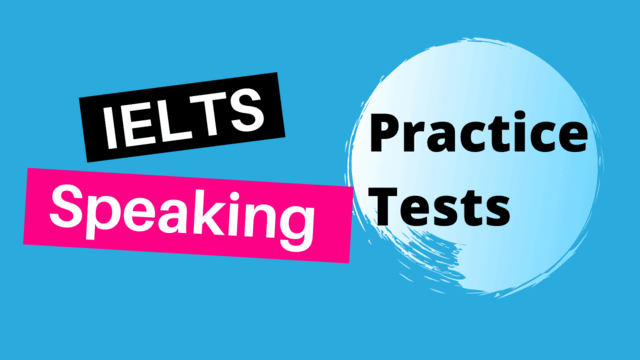In the IELTS Speaking test, your skills in English communication are assessed over three parts: Part 1 (Introduction and Interview), Part 2 (Long Turn), and Part 3 (Discussion). Historical places is a common and interesting topic that explores personal experiences, cultural knowledge, and ideas about the preservation of heritage. Below, you’ll find a 10-question sample test on Historical Places, along with answers, an introduction, and tips to help you perform well in the IELTS Speaking test.

Part 1: Introduction and Interview
- Question: Do you like visiting historical places?
- Answer: Yes, I enjoy visiting historical places because they give me a sense of connection to the past. It’s fascinating to imagine how life was in those ancient times and to see the architecture and artifacts preserved over centuries.
- Question: Is there a famous historical place in your country that you would recommend visiting?
- Answer: Definitely, I would recommend visiting the Imperial Citadel in Hanoi. It’s a UNESCO World Heritage site with significant historical artifacts and beautiful old structures. It gives visitors insight into the country’s ancient culture and traditions.
- Question: How has the Internet made it easier to learn about historical places?
- Answer: The Internet provides access to virtual tours, detailed articles, and high-quality images of historical places around the world. People can explore these sites without needing to travel, and they can easily learn about the history and significance of each location.
- Question: Do you prefer visiting historical sites with a guide or on your own?
- Answer: I prefer visiting with a guide because they provide interesting insights and stories that I might miss on my own. Guides often share unique details and historical facts that enhance the experience and help me understand the significance of the place better.
Part 2: Long Turn
- Question: Describe a historical place you have visited. You should say:
- what the place is
- where it is located
- what you learned about it
- and explain why you found it interesting.
- Answer: I visited the Taj Mahal in Agra, India, a stunning white marble mausoleum. It was built by Emperor Shah Jahan in memory of his wife, Mumtaz Mahal, and is considered a symbol of love. The intricate designs and the architectural beauty left me in awe. I learned about its cultural and historical importance, and it was fascinating to see how much effort went into building this masterpiece.
Part 3: Discussion
- Question: Why do you think people are interested in visiting historical places?
- Answer: People visit historical places to connect with the past, learn about different cultures, and see examples of ancient craftsmanship. Historical places are often linked to national identity, and visiting them helps people gain a deeper appreciation for their heritage.
- Question: Do you think historical places should be preserved? Why or why not?
- Answer: Yes, historical places should be preserved because they are irreplaceable treasures that tell the story of our past. They hold cultural and educational value, allowing future generations to learn about their history and heritage.
- Question: How can technology, especially the Internet, help in the preservation of historical sites?
- Answer: Technology can be used to create digital records and virtual tours of historical sites, helping preserve details for educational purposes. The Internet allows people to explore these places virtually, which can reduce physical wear and tear from heavy tourism while still raising awareness.
- Question: What challenges do historical sites face today?
- Answer: Historical sites face many challenges, including environmental damage, pollution, vandalism, and the pressure of large numbers of tourists. Climate change and natural disasters also threaten the structural integrity of many ancient monuments.
- Question: Do you think visiting historical places can make people more open-minded? Why?
- Answer: Yes, visiting historical places exposes people to different cultures and historical perspectives, which can make them more open-minded. It allows them to appreciate diversity and understand how other societies have evolved, fostering greater empathy and cultural respect.
Tips for Scoring High in IELTS Speaking
- Use Clear Pronunciation and Expressive Intonation
Speak clearly and use natural intonation to emphasize key ideas. This helps convey enthusiasm and makes your responses sound engaging and genuine. - Expand Your Vocabulary on Historical Topics
To stand out, use a range of vocabulary relevant to historical places, such as “preservation,” “heritage,” “architecture,” “cultural significance,” “monument,” and “archaeological.” This shows the examiner you have a strong grasp of topic-specific vocabulary. - Organize Responses in a Logical Manner
Structure your answers clearly, starting with a main idea, providing examples or explanations, and concluding when appropriate. This structure helps the examiner follow your thoughts and shows coherence. - Demonstrate a Range of Sentence Structures
Use complex sentences, passive voice, and conditionals when appropriate (“If historical sites are not preserved, they might be lost to future generations”). A variety of sentence types shows your grammatical range and ability to express ideas effectively. - Maintain Fluency and Keep Talking Confidently
Avoid long pauses and try to keep your answers flowing naturally. If you’re unsure of a question, take a moment to think, or use a filler phrase like “That’s an interesting question.” Practicing historical topics will help you speak more confidently and handle challenging questions.
By preparing with these tips and sample questions on historical places, you’ll be better equipped to communicate your ideas fluently, showcasing a strong vocabulary and well-structured responses. Preparation is the key to achieving a high score in the IELTS Speaking test. Best of luck!
